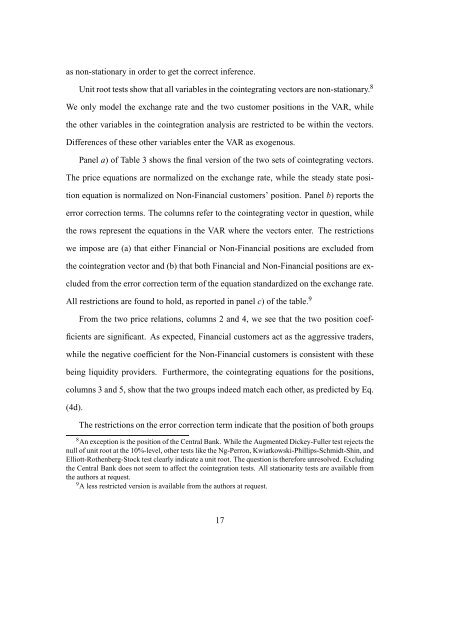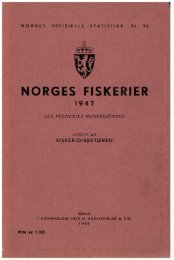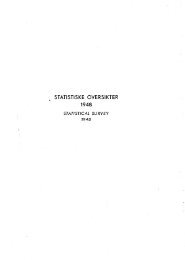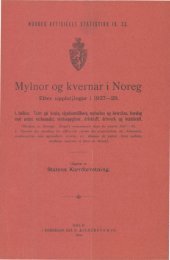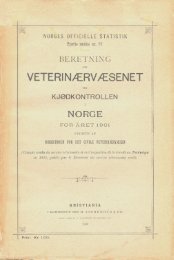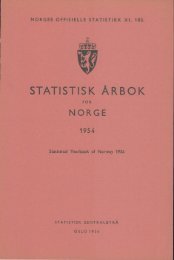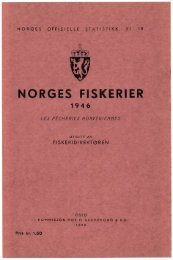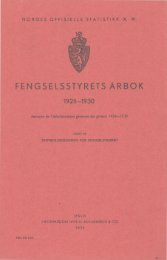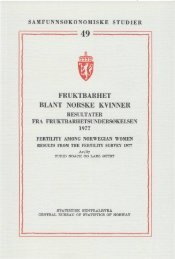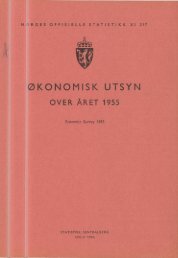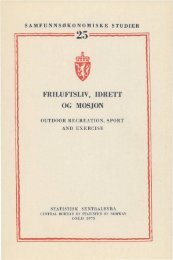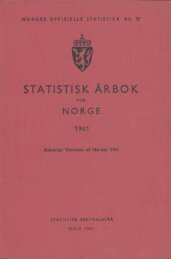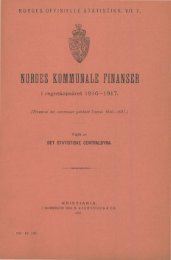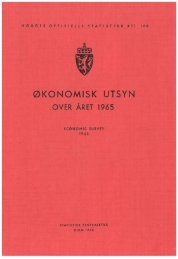Liquidity provision in the overnight foreign exchange market
Liquidity provision in the overnight foreign exchange market
Liquidity provision in the overnight foreign exchange market
You also want an ePaper? Increase the reach of your titles
YUMPU automatically turns print PDFs into web optimized ePapers that Google loves.
as non-stationary <strong>in</strong> order to get <strong>the</strong> correct <strong>in</strong>ference.<br />
Unit root tests show that all variables <strong>in</strong> <strong>the</strong> co<strong>in</strong>tegrat<strong>in</strong>g vectors are non-stationary. 8<br />
We only model <strong>the</strong> <strong>exchange</strong> rate and <strong>the</strong> two customer positions <strong>in</strong> <strong>the</strong> VAR, while<br />
<strong>the</strong> o<strong>the</strong>r variables <strong>in</strong> <strong>the</strong> co<strong>in</strong>tegration analysis are restricted to be with<strong>in</strong> <strong>the</strong> vectors.<br />
Differences of <strong>the</strong>se o<strong>the</strong>r variables enter <strong>the</strong> VAR as exogenous.<br />
Panel a) of Table 3 shows <strong>the</strong> f<strong>in</strong>al version of <strong>the</strong> two sets of co<strong>in</strong>tegrat<strong>in</strong>g vectors.<br />
The price equations are normalized on <strong>the</strong> <strong>exchange</strong> rate, while <strong>the</strong> steady state position<br />
equation is normalized on Non-F<strong>in</strong>ancial customers’ position. Panel b) reports <strong>the</strong><br />
error correction terms. The columns refer to <strong>the</strong> co<strong>in</strong>tegrat<strong>in</strong>g vector <strong>in</strong> question, while<br />
<strong>the</strong> rows represent <strong>the</strong> equations <strong>in</strong> <strong>the</strong> VAR where <strong>the</strong> vectors enter. The restrictions<br />
we impose are (a) that ei<strong>the</strong>r F<strong>in</strong>ancial or Non-F<strong>in</strong>ancial positions are excluded from<br />
<strong>the</strong> co<strong>in</strong>tegration vector and (b) that both F<strong>in</strong>ancial and Non-F<strong>in</strong>ancial positions are excluded<br />
from <strong>the</strong> error correction term of <strong>the</strong> equation standardized on <strong>the</strong> <strong>exchange</strong> rate.<br />
All restrictions are found to hold, as reported <strong>in</strong> panel c) of <strong>the</strong> table. 9<br />
From <strong>the</strong> two price relations, columns 2 and 4, we see that <strong>the</strong> two position coefficients<br />
are significant. As expected, F<strong>in</strong>ancial customers act as <strong>the</strong> aggressive traders,<br />
while <strong>the</strong> negative coefficient for <strong>the</strong> Non-F<strong>in</strong>ancial customers is consistent with <strong>the</strong>se<br />
be<strong>in</strong>g liquidity providers. Fur<strong>the</strong>rmore, <strong>the</strong> co<strong>in</strong>tegrat<strong>in</strong>g equations for <strong>the</strong> positions,<br />
columns 3 and 5, show that <strong>the</strong> two groups <strong>in</strong>deed match each o<strong>the</strong>r, as predicted by Eq.<br />
(4d).<br />
The restrictions on <strong>the</strong> error correction term <strong>in</strong>dicate that <strong>the</strong> position of both groups<br />
8 An exception is <strong>the</strong> position of <strong>the</strong> Central Bank. While <strong>the</strong> Augmented Dickey-Fuller test rejects <strong>the</strong><br />
null of unit root at <strong>the</strong> 10%-level, o<strong>the</strong>r tests like <strong>the</strong> Ng-Perron, Kwiatkowski-Phillips-Schmidt-Sh<strong>in</strong>, and<br />
Elliott-Ro<strong>the</strong>nberg-Stock test clearly <strong>in</strong>dicate a unit root. The question is <strong>the</strong>refore unresolved. Exclud<strong>in</strong>g<br />
<strong>the</strong> Central Bank does not seem to affect <strong>the</strong> co<strong>in</strong>tegration tests. All stationarity tests are available from<br />
<strong>the</strong> authors at request.<br />
9 A less restricted version is available from <strong>the</strong> authors at request.<br />
17


